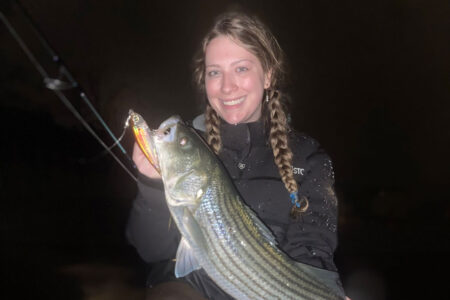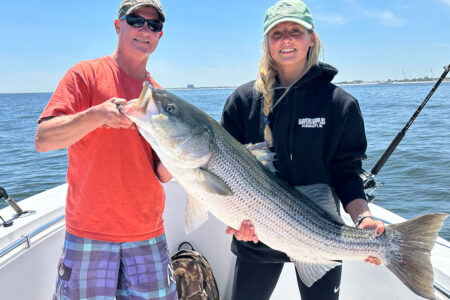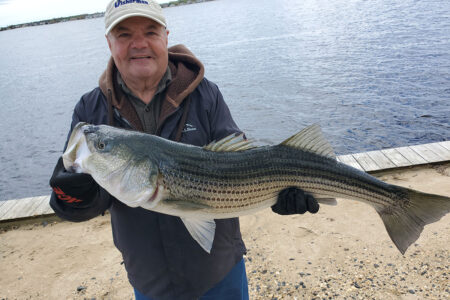Even in milder winters, hardwater fans can get their fix by fixing in on mountain stripers.
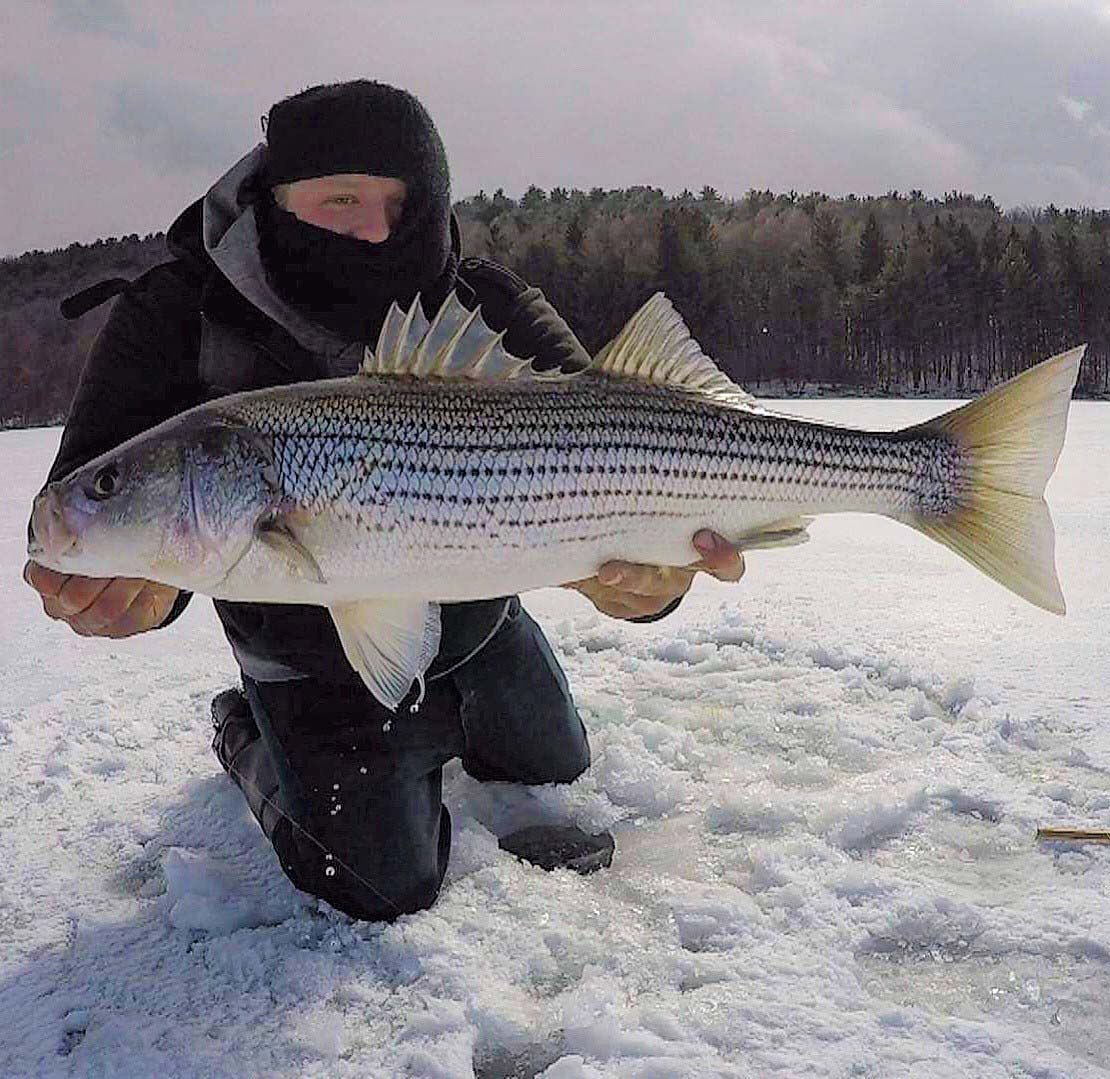
I’m sure there are more than a few surfcasters out on the open beaches at the Jersey Shore tossing teasers and tins, perhaps small swim shads, hoping to tempt a school striper or two.
And there’s also that breed of angler hearty enough to face, and even embrace the cold, and enjoy some mid-winter striper fishing here in the Pocono region. While not for everyone, ice fishing for striped bass can be challenging and often rewarding.
True, often times it’s just an excuse to get out and keep fishing year round, but some serious gamefish can be caught through the ice. Yellow perch, panfish, bass, crappie, pickerel are the norm, however musky, northern pike, and even striped bass can be caught with some patience if you choose your location wisely.
True strain stripers through the ice? Sure, locations like Beltzville and Wallenpaupack for starters. But before we even talk about tactics for ice fishing, it is probably more important to first discuss ice safety. Ice fishing can be dangerous, so it’s critical that you have the right gear before heading out on any frozen lake. First off never wear waders on the ice; if the worst should happen, it will be impossible to pull yourself back on top with waders full of sub-freezing water. Even with the correct outerwear, getting back up should you fall through is a difficult task.
Always bring a set of “Ice Picks” that will let you get a grip on the ice to pull yourself back on top and crawl your way to shore. While having gear to survive in the worst case situation, you should always strive to prevent an incident. A good to prevent mishaps is by using a spud bar, a long metal pole with a point on one end. We use this to probe the ice for safe conditions. Two or three good stabs will let you know if ice is sturdy enough to continue out. This is repeated until you arrive at your desired spot. Should the pole go through, you are best advised to turn around and try another day. It is not worth losing your life over. Generally 4 inches of clear ice is recommended at a minimum for safe ice fishing.
Check Your Depth
Assuming we took all precautions and have arrived and an area we want to fish, it’s time to drill a hole and check depth. This is done with either a chunk of lead on an alligator clip, lowered into the hole until bottom is hit, or by use of a portable sonar. Many portable sonar units will let you see bottom and structure before you even drill a hole. Simply clear any snow from an area, and pour a bit of water on top of the ice, put your sonar or transducer in that area, and it should read. This works best when you have clear black ice; cloudy or snow ice make this much more difficult, but it can save your shoulder if using a manual auger.
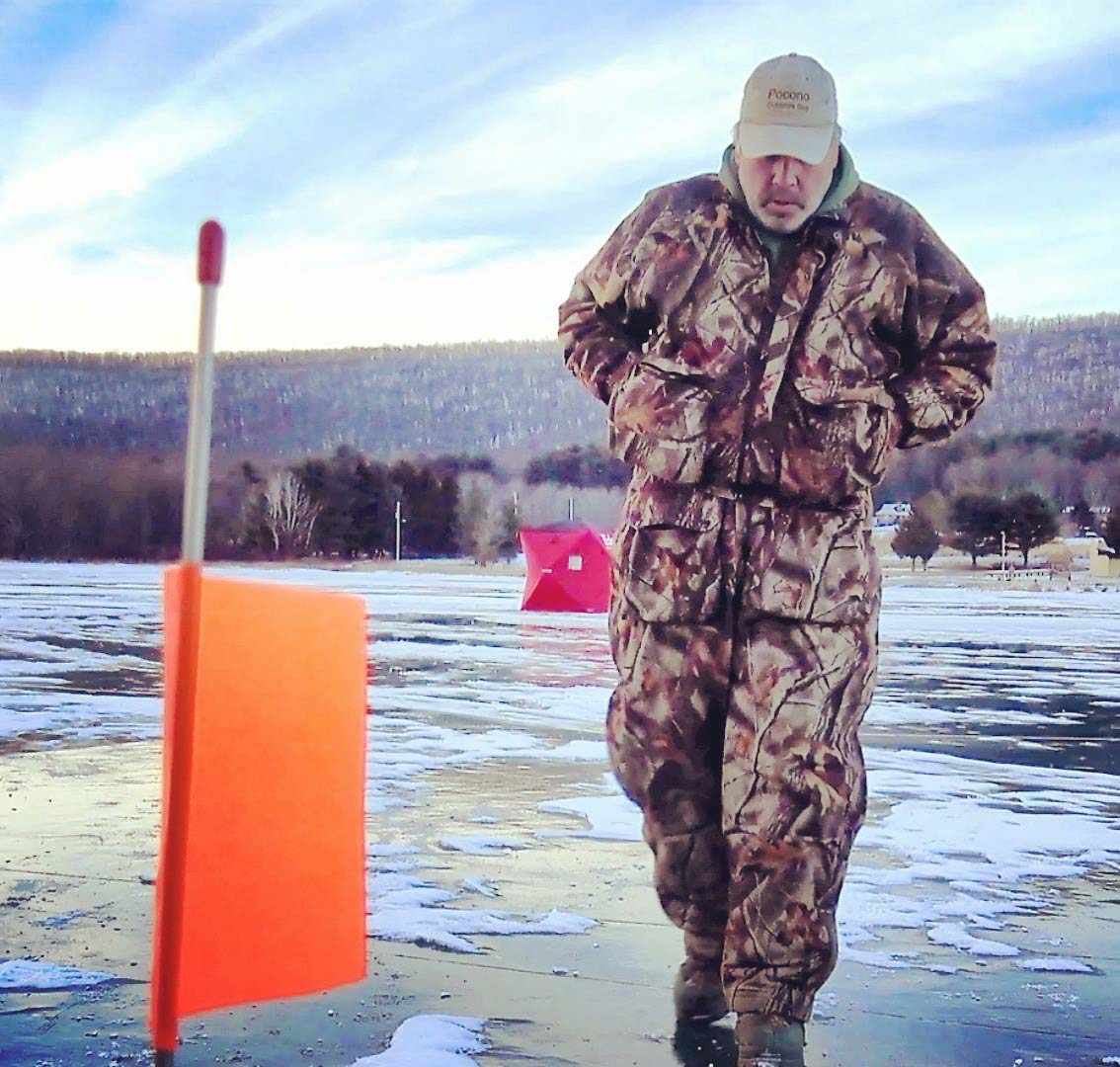
Hunting for stripers under ice is not too much different than you would normally do on any stocked lake. Just keep in mind that as you get to deeper water, it is much warmer than the surface temperatures. (Referenced by the term “lake turnover”). Down 30 feet plus or minus, temps may be in the low 50s, certainly favorable for any striped bass. As stripers do wherever you find them, they are constantly on the move for food. You will often find them cruising the drop-offs, using them as highways in search of schools of baitfish. This is ideally where you want to be.
Stripers can be taken on tip-ups, however you need to be sure it is a robust setup. Preferred is a short spinning outfit with 20- to 30-pound braid and a fluoro leader. Even in mid-winter, circle hooks are preferred. Just remember that if you’re using tip-ups, be sure to stay very close to your setup; a hooked striper can spool them in a heartbeat, while you simply watch on ice as your gear suddenly disappears into the hole before you can get to the flag. Most lakes in the Pocono region are stocked with pure strain stripers with fish in excess of 30 pounds. Challenging in the best of conditions, so you need to be ready.
Fresh Striper Baits
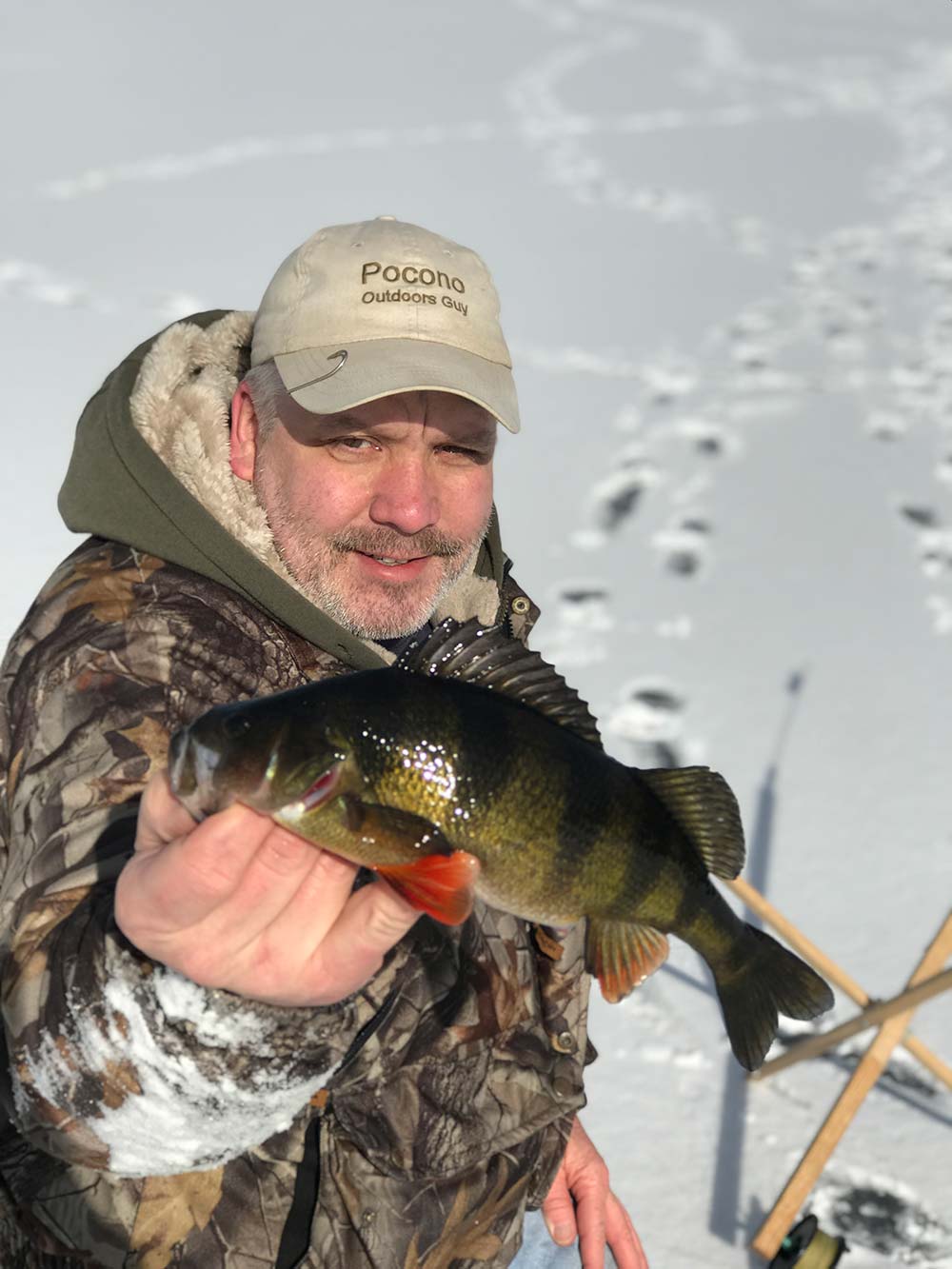
Choosing striper bait in the middle of the mountains or at least a few hours from any saltwater tackle shop requires us to be a bit creative. Asking for bloodworms, bunker or surf clam at a local tackle shop will only get you a funny look. However we do have a few options. Instead of bloodworm or surf clam, substitute chicken livers. They are inexpensive and available in almost every grocery store. They do a great job as an alternate, a big bloody hunk of protein on your hook.
Jumbo shiners are also a great choice, get the largest you can find. If you happen to have any Shad left form the spring run, they are fantastic as chunk bait. Rig them as you would normally, setting them just off bottom near a drop-off. If you are near a trout hatchery, you can purchase trout as bait also, just keep your receipt. Be certain to check regulations in your area first; but a live trout is like candy to those big stripers!
When using cut bait or liver, we will often use a 7/0 to 9/0 circle hook. Do not be afraid to load up that hook with chicken liver; you want several chunks wrapped on about the size of the palm of your hand. Same for cut bait, a nice head or chunk from the mid-section will be a tasty treat for a hungry freshwater cow.
Looking to get in on the inland striper bite in Pennsylvania? Here are three top lakes and reservoirs in the Keystone State known for outstanding striped bass action.
Beltzville Reservoir
Beltzville State Park is a 2,972.39-acre Pennsylvania state park in Franklin and Towamensing townships in Carbon County. The park itself is located at 2950 Pohopoco Drive in Lehighton, PA. For park information call 610-377-0045
Lake Wallenpaupack
A 13-mile long man-made lake built in 1926 that covers 5,700 acres with 52 miles of uninterrupted shoreline. Learn more by visiting the Pocono Mountains Visitors Center located on Route 6, just west of junction of Route 6 & 507. Call 570-226-2141.
Raystown Lake
The largest lake that is entirely within Pennsylvania, this 8,300-acre reservoir in Huntingdon County, PA is home to the state record inland striped bass, a 53-pound, 12-ounce fish caught in 1994 by Robert Price. Raystown is located in Hesston, PA.
We generally do not use too much weight on either setup. A 9/0 hook is plenty heavy alone to drop a liver or cut bait down 30 feet or more. It also helps eliminate any abnormalities in the presentation which might cause fish t to drop the bait. Downsize a bit if using live bait, say a 7/0 hook. For live bait you will need some weight to keep them near the bottom. A slip-sinker above your swivel will do the trick. The larger the bait, the larger sinker you will need to hold it down. Half to 1 ounce is usually enough.
After setting several setups along a drop-off, the wait begins. Keep close to your setups, once a flag is up you need to be on it in a hurry! Use patience when fighting your fish, you only have one point of entry to the water and these fish can run; and run, and run! Be extra careful when your line runs against the bottom of the ice hole, as it can cause a break off if it becomes damaged.
Patience and skill will be rewarded with a trophy striper in your hands caught mid-winter through the ice.
Follow George Schauer, the Pocono Outdoors Guy, every Thursday in The Fisherman’s weekly video forecast for the New Jersey, Delaware Bay edition on YouTube or visit www.PoconoOutdoorsGuy.com.

